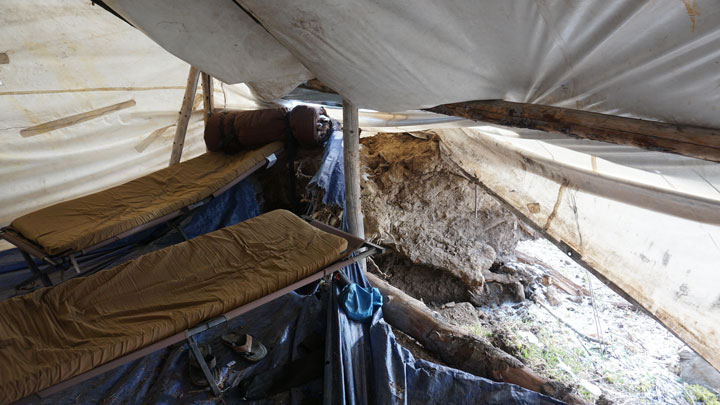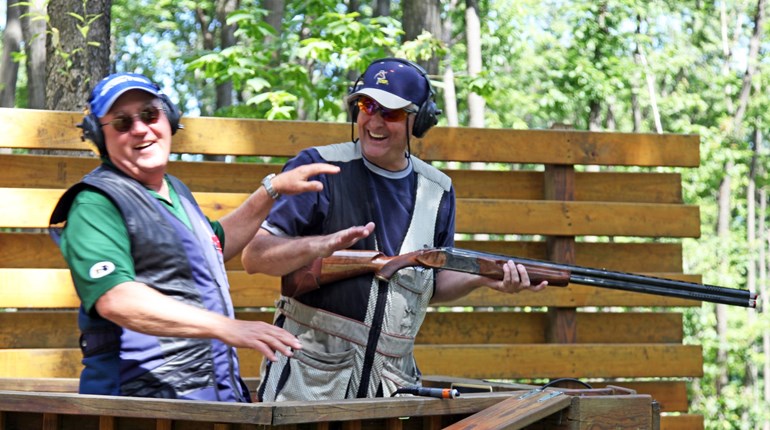
As you are all aware, accidents can and do happen! We always do our best to minimize our risk of being injured on our hunting and hiking trips, but there are no guarantees in life. That’s why it’s important to know the basics of first aid in case you or someone you’re with gets hurt in the backwoods, miles away from medical care. There’s no substitute for a real in-person class, but here are some pointers.
If you have to “be your own doctor” in the wilderness, start the way doctors start, with the Hippocratic Oath: Rule one, do no harm! Always remember that our first concern with an injury is to protect our self or the individual we are helping from further trauma. The second rule to remember is that the first few minutes can be critical! Your third rule of thumb is that all injuries are serious until proven not to be.
Bruising
To avoid black and blue areas under the skin, which are caused by broken blood vessels leaking blood, apply cold packs, never heat. The cold will constrict the vessels to lessen the flow of blood. Then rest and keep pressure off the injured area if possible! (This is why I always carry a small folding saw, so as to make a crutch from a branch if necessary.)
Sprains and Fractures in General
If you come across someone with what could be a fracture, correct management is critical. Could this be a broken bone? Assume it is and treat it as such. If it is and the victims’ fractured bone is not stabilized, the wrong movement can cause severe damage if left to move on its own. Also, do not apply pressure to the injured area and if possible, get help.
If there is a potential spinal injury, do not move the individual, keep him or her warm and get professional help.
Head Trauma
Trauma to the head is very serious, and may not always be immediately apparent. Today we’ll cover concussions and skull fractures.
Concussion
This is brief unconsciousness following a head or neck injury. What causes the unconsciousness? A disruption of the brain’s electrical signals!
Possible Signs & Symptoms of Concussion
- Brief unconsciousness
- Look at the pupils of the eye, they should NOT be dilated
- Drowsiness
- Lack of memory
- Blurred vision or vomiting
First-Aid
- Play it safe and seek immediate medical care.
- It is critical to constantly monitor the individual for the first 24 hours, if not longer as per your doctor’s recommendations. Even after medical intervention and when home, if you cannot arouse the person from sleep, summon medical care immediately.
Fractured Skull
This is when the bones that protect the brain become cracked as from trauma. If there’s been a blow to the head, you should also be aware of the possibility of what we call an intracranial hematoma…which is a blod clot between the brain and skull. It may take days to weeks for symptoms to appear, so for any head injuries, see your M.D. or D.O. as soon as you can.
Possible Signs & Symptoms of a Skull Fracture
- A deformity in the skull which is obvious
- Fluid, either bloody or clear, leaking from the ear or nose
- Check the pupils which should be equal in size
- Look around the eyes and ears for black & blue discolorations which indicate leaking blood from a blood vessel.
First-Aid
- This is an emergency of which first aid is in keeping the victim comfortable and protected while getting help immediately.
- Keep the individual resting and quiet.
- Be ready for CPR if breathing stops! If not you’re already familiar with this life saving procedure, call the Red Cross or your local EMT/Fire Company to see if a course is provided to the public.
Editor's Note: The photo at the beginning of this article is courtesy of American Hunter. It was taken in 2020 when a hurricane nearly wiped out the author's hunting party! Click here for the spellbinding, edge-of-your-seat tale.







































